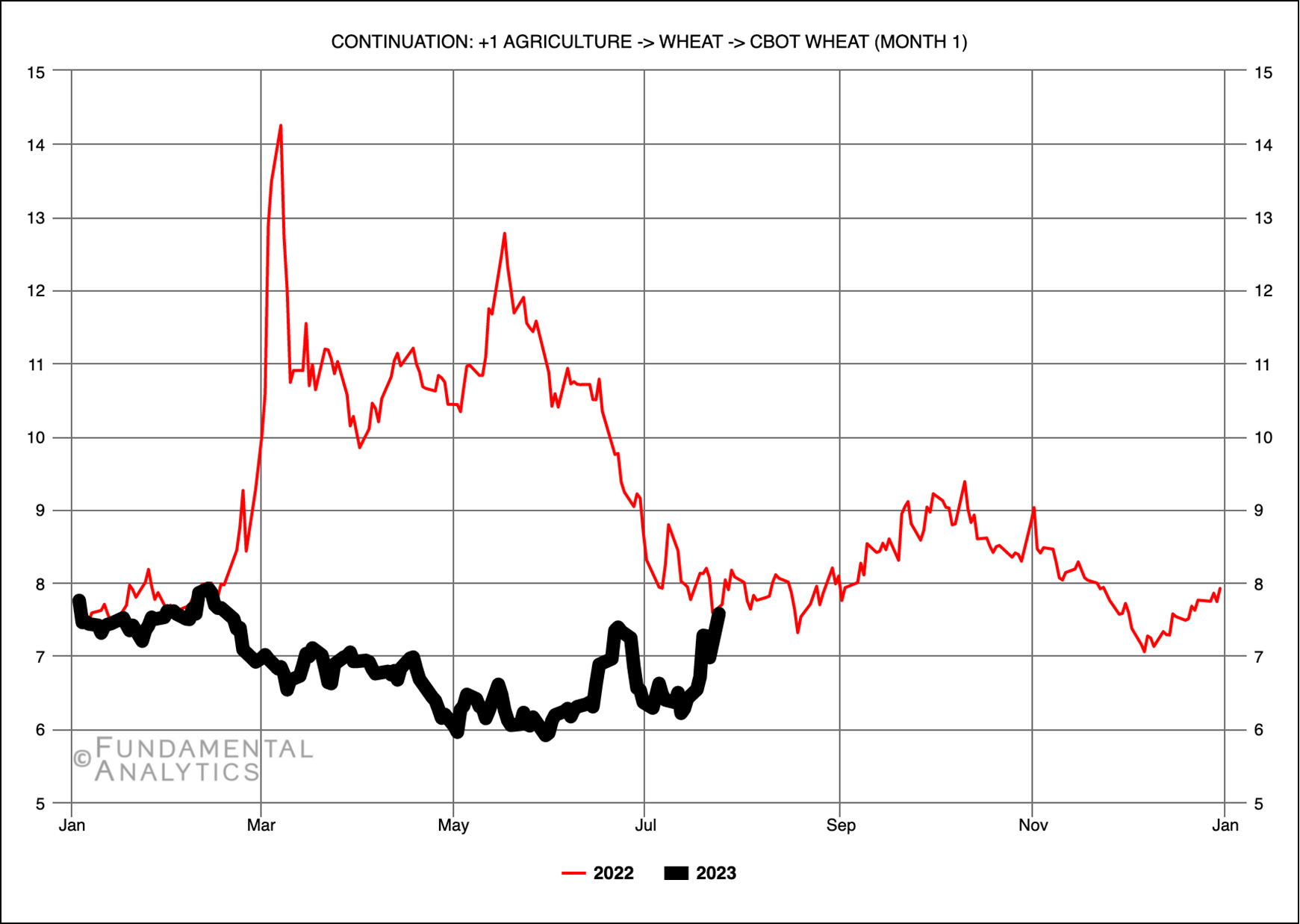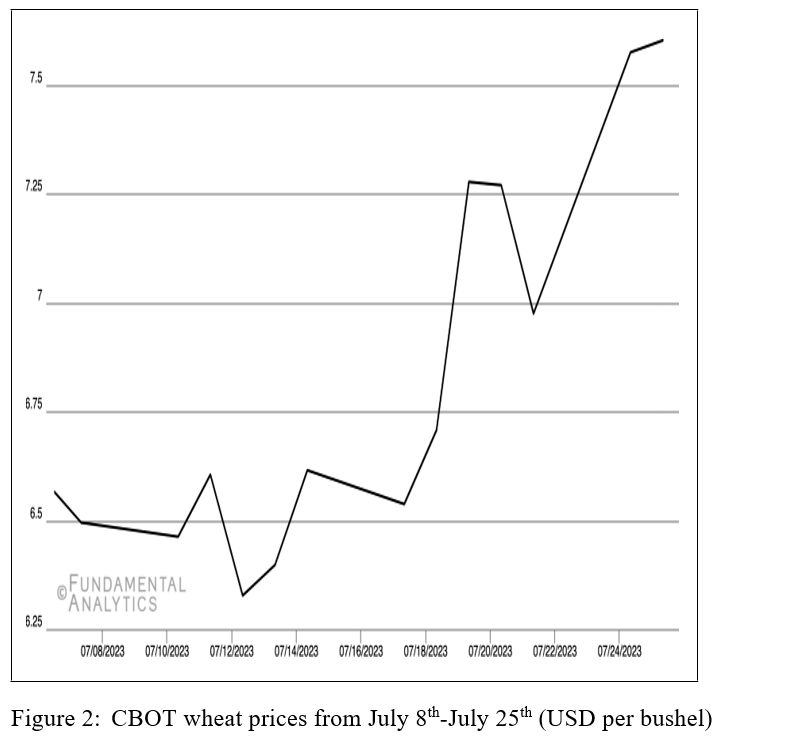Dr. Ken Rietz
July 26, 2023
The news this past week has been, and continues to be, about wheat. We only have room to consider some of what has happened. Two factors predominate: geopolitics and weather. We consider each in turn.
First, though, here is the graph of the price in USD of the front month futures on CBOT wheat, starting in January 2022.
Figure 1 – Front Month CBOT Wheat Futures (USD per bushel)

In late February 2022, Russia invaded Ukraine. You can see clearly in the red line in the chart that the market saw a dramatic increase in the price of wheat, figuring that the conflict would reduce, if not eliminate, shipments from Ukraine. The Black Sea Grain Initiative, brokered by the United Nations (UN) and Turkey, took effect in the summer of 2022; you can also see in the graph above the drop in the price of wheat that accompanied it. This allowed Ukraine to ship safely more than 30 million tons of food total. The benefits to Russia from the initiative included the removal of a large variety of sanctions, one example of which shut down their Ag Bank, which made selling wheat nearly impossible. Russia demanded the lifting of other sanctions which would have enabled it to continue financing the war. Russia declared on July 17th that the treaty was no longer in effect as of July 18th, and subsequently destroyed the port of Odessa, one of the three ports permitted by the treaty. Additionally, Russia announced that any vessels in the Black Sea heading to Ukraine would be treated as hostile.
 The effect on the price of wheat, one of Ukraine’s main exports, was immediately significant, as Figure 2 shows: The price of CBOT wheat went from 6.495 on July 7th to 7.6025 on July 25th. But Ukraine was partly prepared for this eventuality. Various supply routes had been established, tentatively. However, trucks simply could not carry enough wheat to have much of an effect, and railroads were handicapped by different rail gauges in different countries. Yet some wheat could get to ports on the Mediterranean or Baltic Seas and still get out. But the amounts are limited. Since a portion of Africa and parts of the Middle East and southeast Asia rely on that wheat, this could become a serious food security problem.
The effect on the price of wheat, one of Ukraine’s main exports, was immediately significant, as Figure 2 shows: The price of CBOT wheat went from 6.495 on July 7th to 7.6025 on July 25th. But Ukraine was partly prepared for this eventuality. Various supply routes had been established, tentatively. However, trucks simply could not carry enough wheat to have much of an effect, and railroads were handicapped by different rail gauges in different countries. Yet some wheat could get to ports on the Mediterranean or Baltic Seas and still get out. But the amounts are limited. Since a portion of Africa and parts of the Middle East and southeast Asia rely on that wheat, this could become a serious food security problem.
The other major factor is the weather. Globally, the temperatures are hotter than usual, exacerbated also by El Niño. However, the Brazilian spring wheat harvest is at a record level, which will help. Global wheat production is hampered by extended periods of inclement weather, varying within the region. For example, Kansas had very hot and dry weather, and the harvest is expected to drop by 20% this year. In the Henan province of China, the weather is hot and very rainy, which will reduce its wheat harvest as well. But overall, wheat prices are below last year’s level as the Figure 1 shows, indicating at least that with prudent management, reasonable amount of wheat should be available.